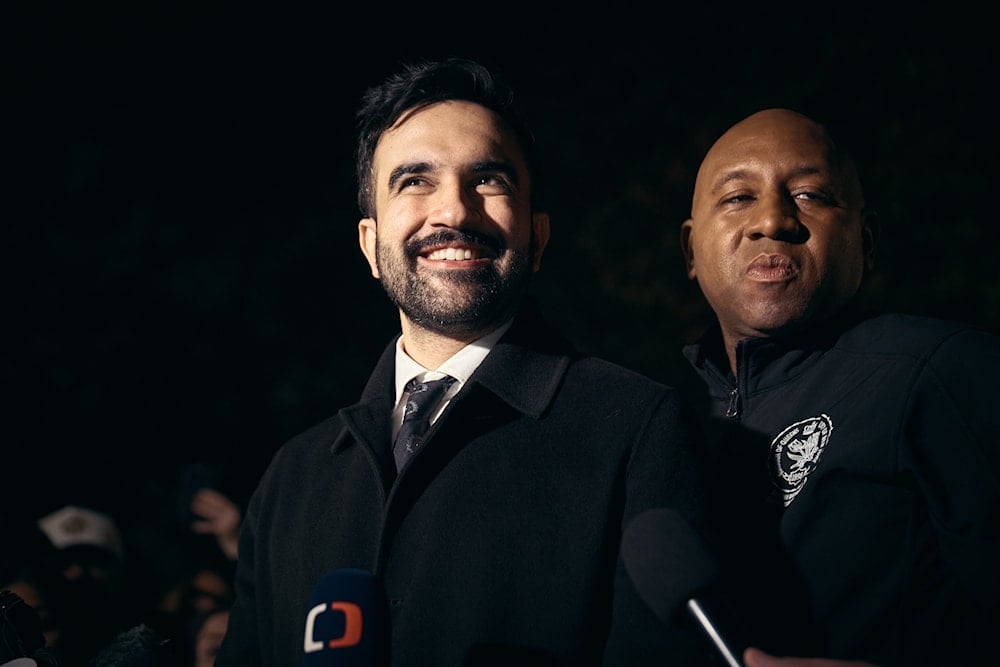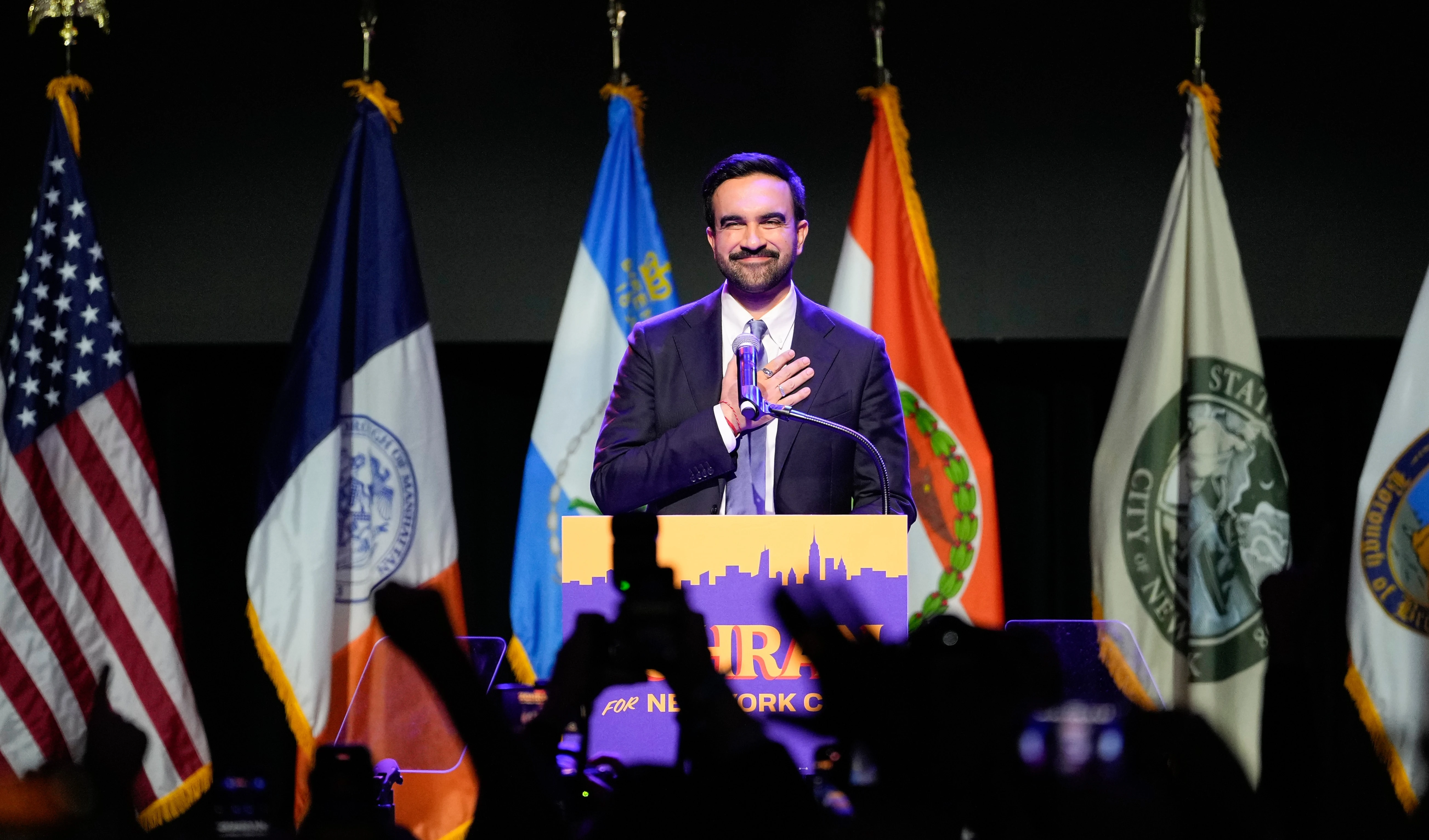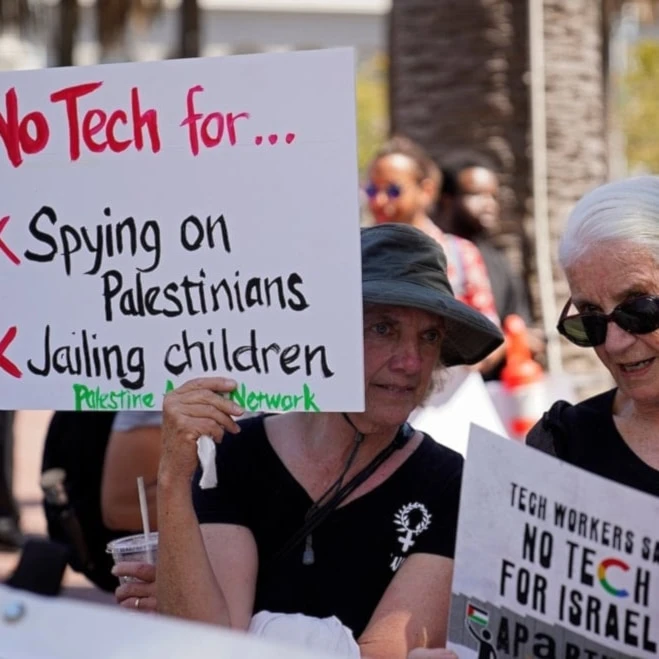NYT urges Mamdani to prioritize pragmatic reforms in six key areas
In a detailed editorial, The New York Times congratulates Mayor-elect Zohran Mamdani and outlines six priority areas: housing, transit, child care, safety, education, and jobs, urging a shift from ideology to measurable results.
-

New York mayoral candidate Zohran Mamdani listens to a question during a press conference at Dutch Kills Playground on November 3, 2025, in the Queens borough of New York. (AP Photo/Andres Kudacki)
The New York Times editorial board released an analytical report on Wednesday outlining six specific areas where they believe New York City’s mayor-elect, Zohran Mamdani, should concentrate his efforts.
While the board did not support Mamdani during the Democratic primary, citing concerns over his inexperience and policy proposals, it has since extended its congratulations following his decisive general election win. That said, the board urged Mamdani to shift from sweeping ideological goals toward pragmatic, measurable achievements.
1. Housing: Supply must match ambition
According to the editorial, New York’s affordability crisis is primarily the result of a long-standing failure to increase housing supply. While Mamdani began his campaign by criticizing developers and advocating for expanded rent stabilization, The Times noted that he later embraced a more pragmatic stance, supporting private development and backing an expanded version of the City of Yes plan.
This shift includes allowing denser construction near transit stations and easing outdated building mandates. His plan to construct 200,000 rent-stabilized units is ambitious, the board concedes, but it must be matched by broader growth in the overall housing stock.
That said, NYT suggests that New York requires 500,000 new homes over the next decade, adding that a successful Mamdani administration should aim for 50,000 new units under construction each year.
2. Transportation: Prioritize speed over free fares
Mamdani has proposed making city buses both free and faster. However, the editorial argues that while free fares are politically popular, improving speed should be the true priority, especially given that average bus speeds hover around just 8 miles per hour.
The board warns that making buses free without replacing the lost revenue could harm system upkeep and public safety. Instead, it recommends implementing reduced fares on major routes used by low-income riders and expanding dedicated bus lanes, particularly if Mamdani works in tandem with Governor Kathy Hochul.
That said, NYT suggests that there should be an increase in average bus speeds to at least 10 mph and raising subway speeds from 17 mph to closer to 20 mph.
3. Child care: Start with 3-year-olds
Mamdani has pledged to deliver universal child care starting at six weeks old, an ambitious promise that The New York Times editorial board describes as “laudable but unlikely” in its entirety, especially without a clear revenue stream.
Still, the editorial board sees opportunity for progress. The mayor-elect could begin by fixing New York’s 3K program, which suffers from access disparities and logistical hurdles. Incremental expansion to include 2-year-olds would also mark meaningful reform.
That said, the editorial suggests that Mamdani ensure 3K enrollment matches the 4K program by 2027, with spots available near families' homes.
4. Public safety: results, not rhetoric
Despite a recent drop in crime, public concern remains high, and the major felony rate is still 25% above pre-pandemic levels. The editorial notes that Mamdani has moderated his earlier anti-police rhetoric and now supports retaining NYPD Commissioner Jessica Tisch, who has overseen recent crime declines.
While Mamdani continues to support alternative public safety programs, particularly for mental health crises, NYT stresses these must work in conjunction with a strong and adequately staffed police presence, suggesting that he reduce major felony crimes by 25,000 per year to return to 2019 levels.
5. Education: Centralized accountability is key
Furthermore, the editorial criticizes Mamdani’s suggestion to decentralize control over New York’s public school system, arguing that strong centralized authority has proven effective elsewhere, from Mississippi’s literacy gains to Chicago’s top-down school improvements.
Instead, Mamdani is urged to focus on raising overall proficiency levels and avoid polarizing debates over relatively small programs such as gifted and talented education. That said, the editorial suggests that he substantially raise eighth-grade reading and math proficiency, currently at 29% and 23%, respectively.
6. Jobs: Build trust with business
The editorial stressed that Mamdani’s association with the Democratic Socialists of America has made many business leaders skeptical, adding that some executives reportedly left recent private meetings with him cautiously optimistic.
It advised Mamdani to make New York more affordable not just for residents, but also for small businesses, through streamlined regulations and tax incentives for long-term leases. To do so, the editorial board suggests he increase the number of businesses operating in New York City by at least 10% during his first term.
'A new age'
Zohran Mamdani will take office on January 1, 2026, as the city’s first Muslim mayor, its youngest mayor in over a century, and the first immigrant mayor since the 1970s. His campaign drew support from young, working-class, and immigrant communities, signaling a generational and ideological shift in New York politics.
The New York Times editorial board cautions that success will be determined not by symbolism, but by governance. They urged Mamdani to build a competence-driven administration, staffed by experienced professionals and focused on results rather than ideology.
If he can deliver on housing, safety, education, and transit, The New York Times concludes, Mamdani could emerge not only as a transformative mayor, but also as a new model for Democratic governance in the United States.

 5 Min Read
5 Min Read










